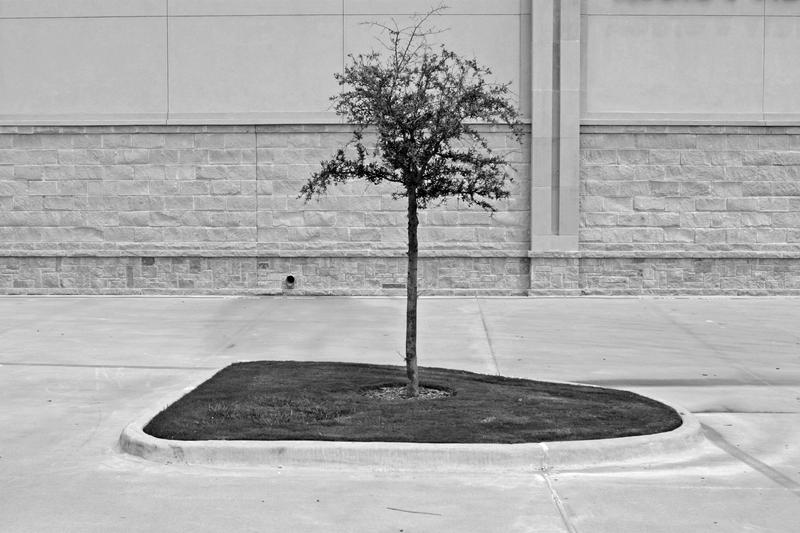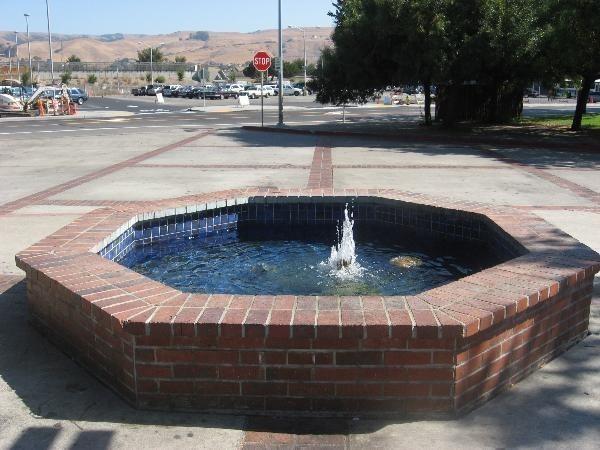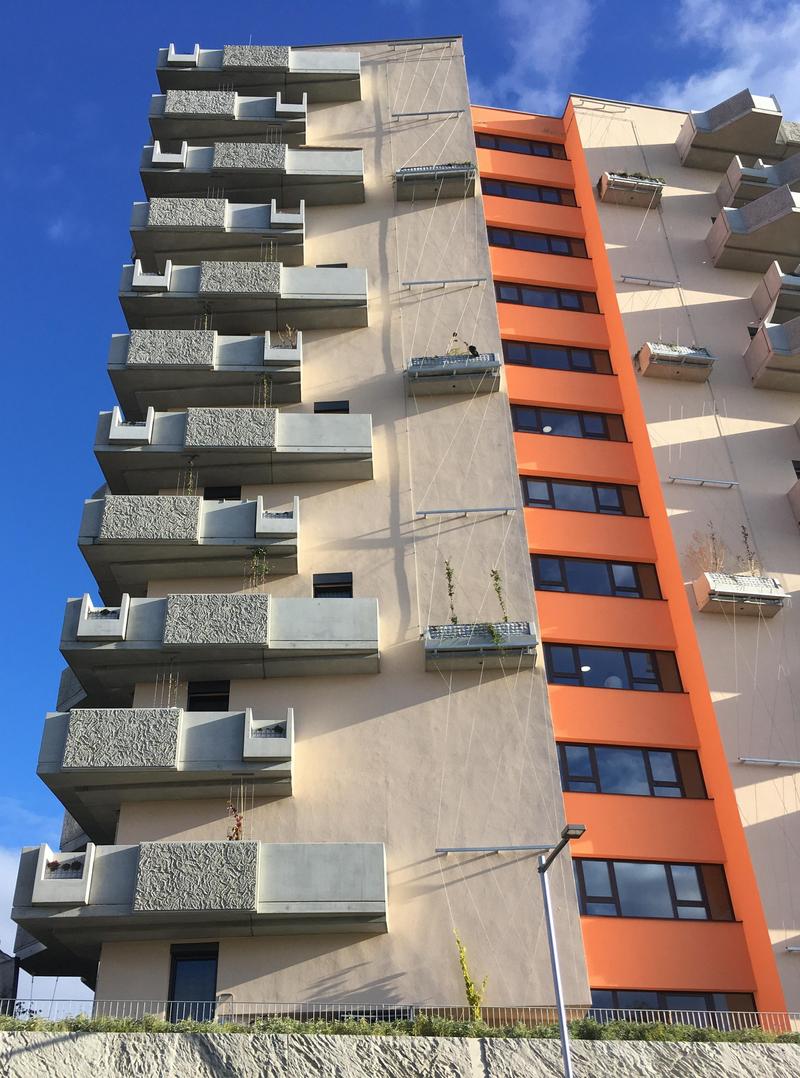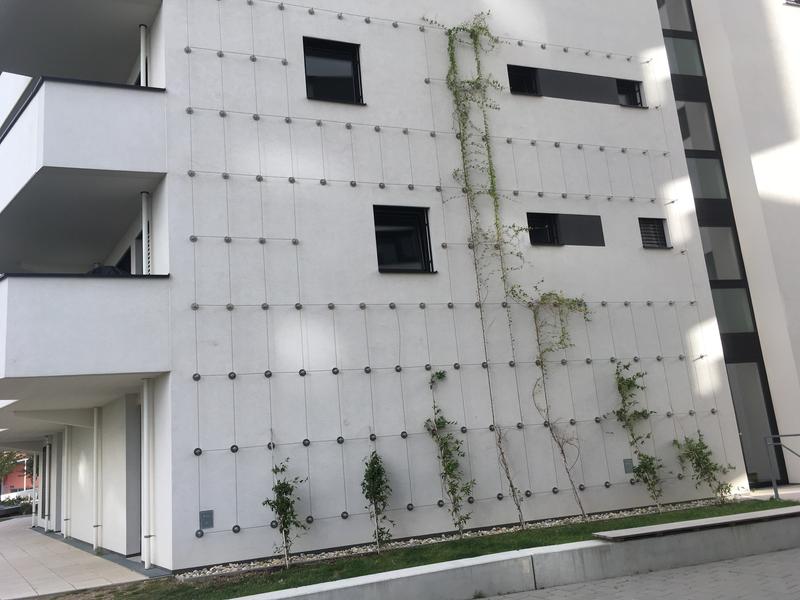5 Urban Climate Mitigation Myths
Before we dive into this, let’s get something straight: in the right circumstances, all of the urban climate mitigation methods that are discussed below are effective and valid ways to create pleasant, liveable cities that are fit for the hotter conditions that are already arriving with the global climate change. However, they are not - or not in isolation, at least - the silver bullets that they are often made out to be. Sometimes, this is due to over-simplified explanations in the media and poor understanding of atmospheric physics, but sometimes it is also caused by dubious interests of parties that are making good money selling one solution or another.
We are fully aware that not everyone will be happy with what we are saying, but as conscientious engineers, we feel that it’s our duty to employ methods that are grounded in sound science and atmospheric physics, even if we have to swim against the current sometimes. With individual experience in complex science & research of more than 20 years in our team, and 10 years of careful work to build the currently most advanced urban heat island simulation model, we are confident in our assessment. Science is not a popularity contest, but it works.
Myth 1: Trees will cool down the air
Don’t get us wrong, we love trees and plants and not just for a single reason. Some of us even do their own farming! We are well aware that trees in the city have lots of positive effects, from pure aesthetics to fostering biodiversity, psychological effects, community-effects and more. However, sometimes urban trees are presented as the one and only silver bullet solution that will magically create pleasant urban microclimates in the light of the global heat catastrophe. Unfortunately, this is not correct - here is why:

Evaporation, shade and air velocity
The three main mechanisms how trees can create cooler microclimate at pedestrian level in summer are: evaporative cooling, shade and increased air velocity. We dive deeper into the reasons for that in our article about urban human thermoregulation, but let’s briefly summarize: Shade prevents the energy contained in direct solar radiation from reaching the surface of our skin. This reduces the heat-load on the body and makes us feel less hot, or at least more able to cope with heat. Evaporation: like humans, trees suffer when it’s hot and also like us, they ‘sweat’ to cool down - the scientific term for that is (evapo)transpiration. The third mechanism is air velocity: when air is moving faster over our skin, it is easier to cool down by sweating. The crowns of trees force the wind to flow around them to an extent. This results in slightly higher air velocity under trees - so sitting under a tree is a bit like sitting in front of a fan - but silent. :)
All great stuff, you might think, so what’s the issue?
Time & Cost
These effects, which we cover in detail in our article about courtyard greening, need the right conditions to work: First of all, trees need to be big and ideally also numerous. Only a big tree has enough leaf area to evaporate so much water that the effect becomes noticeable. Only a big tree has a crown large enough to increase wind velocity underneath it. And only a big tree can create enough shade to provide refuge from the sun. There also needs to be enough water for the tree to survive and thrive, and the wind has to be right, too: Too little and you can even get the opposite effect (see the courtyard article linked above), too much - for example, on top of a high-rise building - and the tree cannot grow or might present a danger.
To get big trees, you need time and/or money! Until a single tree has fully grown and can show its effect on the microclimate, it might take 10, 15 or even 20 years. We also need soil, and especially soil of a depth that actually lets trees grow to appreciable size. Real estate development projects will often show huge trees on artistic renders, while in reality, 15 years might pass until these trees will have tangible effects for citizens.
In many urban development projects, there will be conditions that allow all this: deep soil, enough water, time or money for big trees, proper wind conditions, enough space for the crowns and enough area to plant more than one tree. But in many urban settings, one or more of these factors will prevent the effective use of trees as a climate mitigation measure.
In these cases, it makes much more sense to look at alternatives like technical shading, wind engineering, etc., rather than sticking with a ‘solution’ that might never really materialize.

Myth 2: Cool air from the countryside
It’s a really relatable thought - after all, the air is cooler outside of the city - so let’s just make sure that there are not too many big buildings in the way, so that the cool air from the countryside can cool us down, right?
We wish it could be so easy. Air over forests and grassland is in an energetic balance that manifests itself as lower air temperature (see this infograph about the relative influence of these factors) and air in the city is likewise in an energetic balance that, however, manifests itself as a higher temperature. At pedestrian level, this balance changes really fast within meters - that is easy to see in highway mirages: despite grass and trees surrounding a road, the air above the road is so hot that it produces the well-known mirage effect. Altered surfaces (light colors to boost albedo, soil and grass for insulation) will mitigate this, but every city has more surface - and more sealed surface - than the countryside.
There actually is a way to use air ‘from the country’ to cool down the city - or more precisely, to make people feel cooler, and it’s not too far from the original idea either, but it uses a different mechanism. While we cannot hope to design cities that somehow funnel cold air into the city center, we can very well design cities in ways that permit the air to flow faster in the main direction of summerly winds. This increased air velocity enables people to sweat more effectively and helps to mitigate conditions that are potentially dangerous for humans.
We did participate in a number of projects where careful interaction of landscaping, architecture, zoning and urban planning allow good ventilation in summer, especially in areas that are designed for summer outdoor use (playgrounds, recreation areas, etc.). However, one caveat is that increased air velocity can be dangerous by itself, especially around high-rise buildings, so this approach needs a careful consideration of risks and benefits.
One area in which “cool air from the countryside” definitely does help too cool cities is nighttime cooling. Deep street canyons (=high surface area, low sky-view-factor) of cities retain heat much better than natural landscapes that radiate much heat back into space over night. In the absence of solar radiation, the cooler country air can make headway into cities and help them cool down faster. That is, if we are careful not to place big trees into the path of these air streams.

Myth 3: Fountains, ponds and the sponge city
Evaporative cooling from fountains, ponds and other ways of direct water evaporation can deliver a lot of cooling energy theoretically, and it’s a really good idea to use available water that is not needed otherwise for just that purpose. So why do we include it in our list? Because of its inherent mass- and energy limitation and atmospheric dilution effects.
Coupled with big trees, as we mentioned above, retained rain water can slowly evaporate, which is a great idea if the soil is deep enough. However, simple, stagnant basins of water with little depth and surface have limited impact. A bit better are fountains and spraying devices that create much larger surfaces from which water can evaporate. These devices do indeed cool down the air.
To reach maximum impact, however, there is a delicate balance to find: too much air movement, and the cooling effect will quickly dilute and dissipate, too little air movement and the humidity will rise, which will cause an increase in the felt temperature, because it inhibits evaporative cooling from sweating (details in our article about human thermoregulation).
So, in general, direct water surfaces and spraying will be effective in semi-enclosed spaces, but will quickly show either a bad cost/benefit ratio (in open spaces) or cause an increase of felt temperature (in enclosed spaces). As we mentioned in the introduction to this article: there is a time and place for this technique, but it’s not a silver bullet either.
Retaining rainwater for irrigation and in particular the creation of organic, soil- or soil-like retention volumes for water is great for a number of reasons, from cooling to flood prevention. Wherever possible, intensive (deep-soil) areas or even blue-green retention areas should be used on vertical space that is not used otherwise - the more the better. But space is scarce in cities by definition and therefore the creation of these retention volumes progresses only slowly.

Myth 4: Green roofs and walls
Many of the limits discussed above are true for green roofs and walls. They need water, are sensitive to too little or too much wind, can be expensive to build and maintain, etc. However, in the right circumstances, they can absolutely make a lot of sense. Yet, contrary to popular belief, they do make much more sense for the building they cover, than for the open space surrounding it.
The reasons for that are shade and insulation. Green walls and roofs form an additional layer around buildings that prevents the wall of the building from becoming hot, which in turn helps to cool the building. There is much less cooling effect on the outdoor environment, because the leaf area is often relatively small for both green roofs and walls and also because the cooling effect does not happen at street level, where the public can profit from it (though inhabitants will).
For roofs, it is very expensive to build soil pockets deep enough to allow bigger trees to grow, and due to higher wind velocities, it might be outright dangerous. In our opinion, it is in many cases more cost-effective to use a combination of technical shading (for accessible areas) and low-maintenance plants / photovoltaics for roof areas that are not accessible. Traditional extensive green roofs retain little water and dry surfaces have little cooling effect, more effective solutions like intensive green roofs and blue-green roofs are costly and often only implemented in a limited amount of projects due to missing economic / political support.

The images here are from a project that touts itself as a landmark project to mitigate urban heat island effects, going so far as to claim that it does not only cool down itself, but even the surrounding city by as much as 3°C air temperature, which is ludicrous in itself (it would be easy, then, to solve the problem of increasingly hot cities or even climate change itself!). From the images, taken a year after completion, it is clear that there is a very wide gap between the planning aspiration and reality at least in the short and mid-term. In order for this to make a big difference for cities, a much bigger effort is needed.
Myth 5: Let’s just stay inside and use air conditioning
Global warming is increasingly threatening to make entire regions uninhabitable for humans, due to high wet bulb temperatures that prevent humans from cooling down, and lead to heat stroke and ultimately death, regardless of the physical health of the individual. So is it an option to just stay inside?
Unfortunately not. First of all, there are plenty of professions that simply require humans to work out in the open - from construction work over garbage collection to police work. There already is a quickly growing industry offering powered cooling vests for people that need to work outdoors in hot conditions. Our modern urban society cannot function without the outdoors, even if it is just to ensure the electricity flow into our buildings to operate the air conditioning. So, short of building outright underground cave cities, this is not a realistic option.
And there is a second caveat, the very use of air conditioning results in waste heat - waste heat that heats up the environment even more. We explain this in more detail in our article about climate mitigation architecture. The gist of it is that we must take care to build our cities for passive cooling. The very geometry of the city must be optimized to take on as little heat as possible in human-accessible areas - otherwise we will work ourselves into a spiral of using more and more energy to keep the indoors cool, while heating up the outdoors even more.
Summary
We’d like to emphasize again that all of the presented ‘myths’ do make sense for urban climate mitigation if they are used in the right context. However, if these landscape architecture mitigation tools are not used correctly, they are costly and ineffective at best and dangerous and counterproductive at worst.
We do live in a complex world and in order to carve out liveable, enjoyable urban environments in this age of global warming, we are well advised to embrace this complexity, do our best to understand it and use the best available tools in the right places. A couple of seedling trees, a raised plant bed in a private garden - as much as we like these initiatives - are too little, too late to make a big impact to the urban microclimate in the near future. Coordinated large scale projects, political initiatives and a much stronger and bigger effort is needed.
At Rheologic, we have developed the tools that model these complex interactions of urban landscapes, solar radiation, air flow and energy balances, to be able to give our clients a robust assessment of the various trade-offs of different design options. Our models are a validated, high-resolutions approach, that can capture the urban environment with all the details that are necessary for a true-to-life representation of the actual conditions. Moreover, we have created low-barrier tools to discuss results in interdisciplinary teams - or even include citizens and tenants in the design process - using 3D models that can be interacted with right in the browser; take a look at the demo page to try it out yourself.
If you’d like to know what we can do for you, simply send us a message and let’s talk!.
Published: